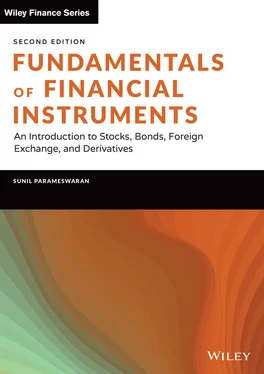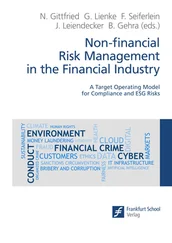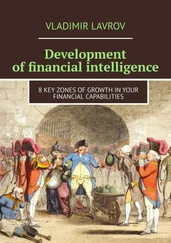8 About the Author About the Author Sunil K. Parameswaran is the director and CEO of Tarheel Consultancy Services, a corporate training and management consultancy firm set up by him in 2004. Sunil is a Visiting Faculty at some of the leading business schools in India, where he anchors courses in the area of Finance. His primary areas of interest are Securities Markets; Financial Derivatives; Fixed Income Securities; and International Finance. For the past 20 years Sunil has been active as a corporate trainer and management consultant. He has delivered training programs on Global Securities Markets and Global Banking to some of the multinational IT firms located in India. Sunil also has over 30 years of teaching experience and has taught at leading business schools in the United States (University of Iowa), Singapore (National University of Singapore), Australia (La Trobe University), and India. His past clients include WIPRO Technologies, HCL, Capgemini, Accenture, Microland, and JPMC. Sunil obtained his PhD in Finance from the Fuqua School of Business at Duke University in North Carolina. He obtained his MBA from the Indian Institute of Management, Bangalore, and holds an undergraduate degree in Chemistry from St. Stephen's College, New Delhi. A prolific writer, he has published several books with John Wiley & Sons in Singapore and DeG Press in the United States. His most recent book is Fixed Income Securities , published by DeG Press, Boston/Berlin.
9 CHAPTER 1: An Introduction to Financial Institutions, Instruments, and Markets CHAPTER 1 An Introduction to Financial Institutions, Instruments, and Markets THE ROLE OF AN ECONOMIC SYSTEM Economic systems are designed to collect savings in an economy and allocate the available resources efficiently to those who either seek funds for current consumption in excess of what their resources would permit, or else for investments in productive assets. The key role of an economic system is to ensure efficient allocation . Efficient and free flow of resources from one economic entity to another is a sine qua non for a modern economy. This is because the larger the flow of resources and the more efficient their allocation, the greater is the chance that the requirements of all economic agents can be satisfied, and consequently the greater are the odds that the economy's output will be maximized. The functioning of an economic system entails making decisions about both the production of goods and services and their subsequent distribution. The success of an economy is gauged by the extent of wealth creation. A successful economy consequently is one that makes and implements judicious economic decisions from the standpoints of production and distribution. In an efficient economy, resources will be allocated to those economic agents who are able to derive the optimum value of output by employing the resources allocated to them. Why are we giving so much importance to the efficiency of an economic system? The emphasis on efficiency is because every economy is characterized by a relative scarcity of resources as compared to the demand for them. In principle, the demand for resources by economic agents can be virtually unlimited, but in practice, economies are characterized by a finite stock of resources. Efficient allocation requires an extraordinary amount of information as to what people need, how best goods and services can be produced to cater to these needs, and how best the produced output can be distributed. Economic systems may be classified as command economies or as free market economies. This definition refers to the two extreme ends of the economic spectrum. In practice, most modern economies tend to display characteristics of both kinds of systems, and they differ only with respect to the level of government control.
THE ROLE OF AN ECONOMIC SYSTEM A COMMAND ECONOMY A COMMAND ECONOMY In a command economy, such as the former Soviet Union, all production and allocation decisions are taken by a central planning authority. The planning authority is expected to estimate the resource requirements of various economic agents, and then rank them in order of priority based on their relevance to social needs. Production plans and resource allocation decisions are then made so as to ensure that resources are directed to users in descending order of need. In practice, communist and socialist systems, which were based on this economic model, ensured that citizens complied with the directives of the state by imposing stifling legal, and occasionally, coercive measures. The failure of the command economies was inherent in their structure. As we have discussed, efficient economic systems needed to aggregate and process an enormous amount of information. When this task was entrusted to a central planning authority, this not only proved to be infeasible in practice, but the quality of information was also substandard. The central planning authority was supposed to be omniscient and was expected to have perfect information as to what resources were available and what the relative requirements of the socioeconomic system were. This was necessary for them to ensure that optimal decisions were made about production as well as distribution. Command economies were in practice plagued by blatant political interference. The planning authority was often prevented from making optimal decisions due to political pressures. The system gave the planners enormous powers that permeated all facets of the social system and not just the economy. One of the hallmarks of such systems was the absence of pragmatism, and a naïve idealism that was out of touch with realities. Planners used their authority to devise and impose stifling rules and regulations. These regulations, which were in principle intended to ensure optimal decision making, sometimes went to the ridiculous extent of imposing penalties on producers whose output exceeded what was allowed by the permit or license given to them. Such economies were a colossal failure in practice and were characterized by an output that was invariably far less than the ambitious targets that were set at the outset of each financial year. When confronted with the specter of failure the planners tended to place the blame on those who were responsible for implementing the plans. The bureaucrats in charge of implementation passed the buck back by making allegations of improper decision making on the part of the planners. Eventually the contradictions in the system lead either to the total repeal of such systems or else to substantial structural changes that brought in key features of a market economy.
A MARKET ECONOMY CLASSIFICATION OF ECONOMIC UNITS AN ECONOMY'S RELATIONSHIP WITH THE EXTERNAL WORLD THE BALANCE OF TRADE THE CURRENT ACCOUNT BALANCE FINANCIAL ASSETS MONEY MONEY AS A UNIT OF ACCOUNT OR A STANDARD OF VALUE MONEY AS A MEDIUM OF EXCHANGE MONEY AS A STORE OF VALUE MONEY IS PERFECTLY LIQUID EQUITY SHARES DEBT SECURITIES PREFERRED SHARES FOREIGN EXCHANGE DERIVATIVES FORWARD AND FUTURES CONTRACTS OPTIONS CONTRACTS SWAPS MORTGAGES AND MORTGAGE-BACKED SECURITIES HYBRID SECURITIES PRIMARY MARKETS AND SECONDARY MARKETS EXCHANGES AND OVER-THE-COUNTER (OTC) MARKETS BROKERS AND DEALERS THE NEED FOR BROKERS AND DEALERS TRADING POSITIONS THE BUY-SIDE AND THE SELL-SIDE INVESTMENT BANKERS DIRECT AND INDIRECT MARKETS MUTUAL FUNDS MONEY AND CAPITAL MARKETS THE EUROCURRENCY MARKET THE INTERNATIONAL BOND MARKET GLOBALIZATION OF EQUITY MARKETS DUAL LISTING FUNGIBILITY ARBITRAGE ARBITRAGE WITH ADRs GDRs RISK AFTER THE TRADE – CLEARING AND SETTLEMENT DEMATERIALIZATION AND THE ROLE OF A DEPOSITORY CUSTODIAL SERVICES GLOBALIZATION – THE NEW MANTRA NOTES
10 CHAPTER 2: Mathematics of FinanceINTEREST RATES THE REAL RATE OF INTEREST THE FISHER EQUATION SIMPLE INTEREST & COMPOUND INTEREST PROPERTIES A SYMBOLIC DERIVATION PRINCIPLE OF EQUIVALENCY CONTINUOUS COMPOUNDING FUTURE VALUE PRESENT VALUE HANDLING A SERIES OF CASH FLOWS THE INTERNAL RATE OF RETURN EVALUATING AN INVESTMENT ANNUITIES: AN INTRODUCTION ANNUITY DUE PERPETUITIES THE AMORTIZATION METHOD AMORTIZATION WITH A BALLOON PAYMENT THE EQUAL PRINCIPAL REPAYMENT APPROACH TYPES OF INTEREST COMPUTATION LOANS WITH A COMPENSATING BALANCE TIME VALUE OF MONEY–RELATED FUNCTIONS IN EXCEL COMPUTING THE PRESENT AND FUTURE VALUES OF ANNUITIES AND ANNUITIES DUE IN EXCEL AMORTIZATION SCHEDULES AND EXCEL NOTE
Читать дальше












